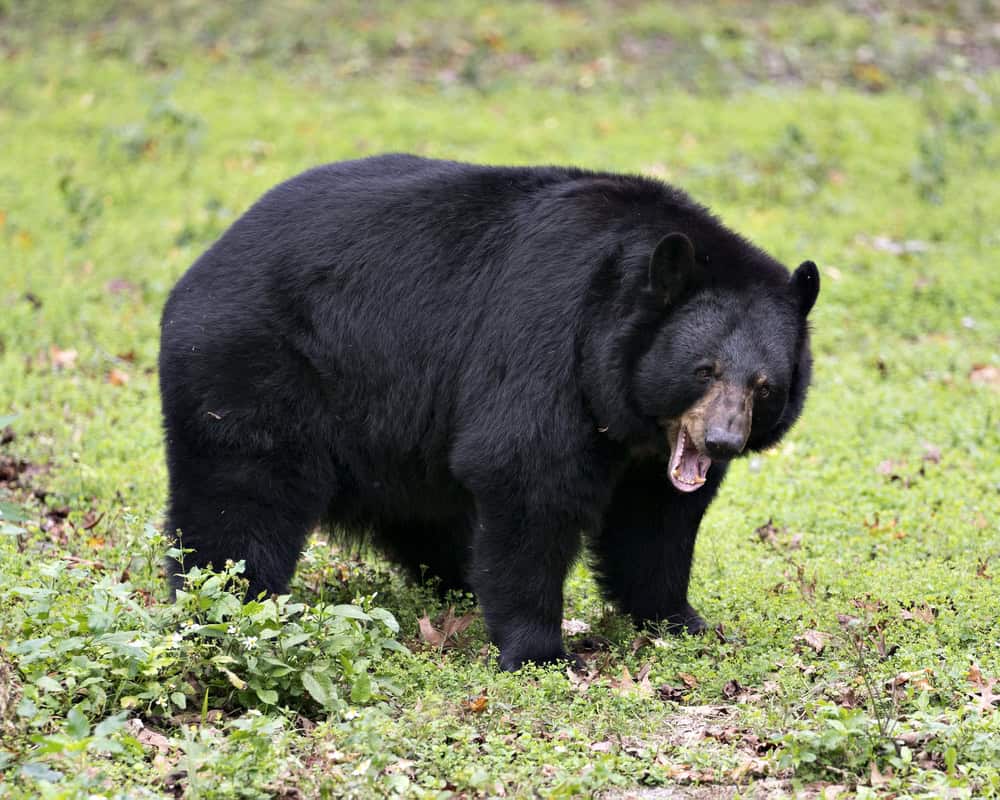The human brain has long been celebrated as the pinnacle of cognitive evolution, but the animal kingdom harbors remarkable neural architectures that rival our own in complexity and specialization. While humans possess approximately 86 billion neurons arranged in intricate networks, several other species have evolved brains with fascinating capabilities that allow them to solve complex problems, demonstrate self-awareness, use sophisticated communication, and display emotional intelligence. From the surprisingly advanced cognition of cephalopods to the extraordinary memory capabilities of corvids, exploring the most complex animal brains beyond humans reveals a rich tapestry of evolutionary innovation. This journey through the animal kingdom’s most sophisticated minds challenges our understanding of intelligence and consciousness, highlighting that advanced cognition has evolved through multiple pathways across diverse lineages.
The Remarkable Brains of Great Apes

Our closest evolutionary relatives, the great apes—chimpanzees, bonobos, gorillas, and orangutans—possess brain structures remarkably similar to our own. The chimpanzee brain, while approximately one-third the size of a human brain at about 400 cubic centimeters, shares nearly 99% of our genetic makeup. This similarity translates into cognitive abilities that parallel human capacities in surprising ways. Great apes demonstrate self-awareness through mirror recognition tests, use tools strategically, and can learn hundreds of symbols to communicate with humans. Notably, chimpanzees have shown the ability to plan for future events, engage in political coalition building within their communities, and even display cultural transmission of knowledge.
Orangutans, with their highly developed cerebral cortex, showcase extraordinary problem-solving abilities. They meticulously plan and execute complex escape strategies from enclosures, displaying foresight and spatial reasoning. Bonobos, meanwhile, exhibit exceptional emotional intelligence, resolving conflicts through reconciliation rather than aggression. Research at the Great Ape Trust has documented cases of apes using symbolic language to reference past events or express desires about the future, suggesting a form of mental time travel previously thought unique to humans. These capabilities reflect the sophisticated neural architecture that evolved in our common ancestors, with specialized regions for social cognition and advanced problem-solving.
Dolphins: Marine Cognitive Marvels

The bottlenose dolphin possesses a brain that weighs approximately 1,600 grams—larger than the human brain relative to body size—and contains an astonishing 37-45 billion neurons. What makes dolphin brains truly remarkable is their structural complexity. Their cerebral cortex, the brain region associated with higher cognition, contains more cortical folding than human brains, providing increased surface area for neural connections. This advanced architecture supports their demonstrated abilities in abstract reasoning, problem-solving, and social learning.
Dolphins have repeatedly shown capabilities that suggest advanced cognition. They recognize themselves in mirrors, understand complex syntactic structures in communication experiments, and can remember specific individuals decades after last encountering them. Their communication system includes signature whistles that function similarly to names, and they can comprehend artificial languages created by researchers. Some of the most compelling evidence of dolphin intelligence comes from their ability to innovate new hunting techniques and transmit this knowledge culturally. In Australia’s Shark Bay, dolphins have developed the practice of using sponges as protective tools while foraging on the seabed—a technique taught by mothers to their offspring across generations. Their brain structure features elaborated paralimbic regions that likely support their complex social cognition, allowing them to maintain sophisticated alliance networks in the wild.
Elephant Intelligence: The Largest Land Mammal Brain

The African elephant brain weighs approximately 5 kilograms (11 pounds) and contains over 257 billion neurons, more than three times the number in human brains. What makes elephant brains particularly fascinating is their highly developed hippocampus—a region critical for memory formation and spatial navigation. This neural specialization supports their legendary memory capabilities, which enable elephants to remember migration routes spanning thousands of miles, recognize hundreds of individual elephants, and recall the locations of water sources they haven’t visited in decades.
Elephants display numerous cognitive abilities traditionally associated with advanced intelligence. They recognize themselves in mirrors, demonstrating self-awareness that few species possess. They show empathy by comforting distressed herd members and even engaging in mourning behaviors for their dead, including returning to the remains of family members years after their death. Tool use is well-documented among elephants, who fashion branches to swat insects and modify objects to reach food. Their temporal lobe—associated with memory processing—is particularly dense and complex, potentially explaining their exceptional recollection abilities. Research by neuroscientist Paul Manger has identified specialized neuronal adaptations in elephant brains that may contribute to their complex cognition despite having a lower neuron density per volume than primates. Their intelligence appears to have evolved independently from the primate lineage, representing a fascinating case of convergent cognitive evolution.
Corvid Cognition: Feathered Geniuses

Corvids—the family including crows, ravens, jays, and magpies—possess brains that, while small in absolute size, contain neural densities comparable to primates. A raven’s brain, weighing just 15-20 grams, contains approximately 1.2 billion neurons—a remarkable concentration given their body size. The key to corvid intelligence lies in their proportionally large forebrain, particularly the nidopallium caudolaterale, which serves similar functions to the mammalian prefrontal cortex in executive control and complex problem-solving.
The cognitive capabilities of corvids consistently astonish researchers. New Caledonian crows manufacture and use complex tools, including hooks and serrated edges, showing levels of craftsmanship once thought exclusive to humans and great apes. Ravens have demonstrated planning for future needs, caching food in anticipation of scarcity, and even collecting objects they might use later. Scrub jays show evidence of episodic-like memory—recalling what, where, and when specific events occurred—and can adjust their food caching strategies if they believe other birds are watching, suggesting theory of mind capabilities. Magpies pass the mirror self-recognition test, indicating self-awareness typically associated with higher mammals. Perhaps most impressively, crows can recognize individual human faces for years and communicate this information to other crows who have never encountered those individuals. The neuroanatomist Onur Güntürkün describes corvid brains as achieving “primate-like cognitive abilities with a completely different neural architecture,” representing one of the most profound examples of convergent cognitive evolution in the animal kingdom.
Cephalopod Intelligence: Alien Minds of the Ocean

Octopuses, with approximately 500 million neurons, possess the most complex nervous systems among invertebrates. What makes cephalopod brains particularly fascinating is their radically different organization compared to vertebrate brains. While vertebrates have centralized nervous systems, octopuses distribute roughly two-thirds of their neurons throughout their eight arms, creating a form of distributed cognition unlike any mammalian brain. Each arm contains approximately 40 million neurons and can operate semi-autonomously, solving problems even when disconnected from the central brain.
The cognitive abilities of octopuses are legendary among marine biologists. They can navigate complex mazes, solve mechanical puzzles requiring multiple steps, and learn through observation rather than trial-and-error alone. Their problem-solving capabilities include opening childproof pill bottles, unscrewing jar lids, and escaping from seemingly secure tanks. The famous octopus Otto, housed at a German aquarium, was documented throwing rocks at annoying bright lights and squirting water at electrical outlets to short-circuit the system. Octopuses can also recognize individual human caretakers, showing preference or avoidance based on past interactions. Most remarkably, they exhibit different “personalities”—consistent behavioral traits across time and situations. Their unique neural architecture, evolving independently from the vertebrate lineage for over 500 million years, represents a completely different evolutionary path to complex intelligence. Neuroscientist Jennifer Mather describes octopus cognition as “the closest thing to alien intelligence we can study,” providing valuable insights into how intelligence can evolve through entirely different neurological systems.
Pigs: Underestimated Farm Geniuses

Domestic pigs possess brains weighing approximately 180 grams and containing around 425 million neurons—comparable to dogs and some primates. Their neural architecture includes well-developed frontal lobes and a complex cerebral cortex with substantial folding, similar to more recognized intelligent mammals. This advanced structure supports cognitive capabilities that have consistently surprised researchers who study animal cognition.
The cognitive abilities demonstrated by pigs challenge traditional assumptions about farm animal intelligence. Studies conducted at multiple research centers have shown that pigs can learn symbolic languages, with some individuals mastering interfaces with over 20 distinct symbols. They excel at spatial memory tasks, outperforming dogs when recalling the locations of hidden objects over time. Pigs readily understand mirror reflections, using mirrors to locate hidden food sources—a capability demonstrating advanced spatial cognition. They engage in tactical deception, leading competitors away from food sources when they believe they’re being watched. Perhaps most impressively, pigs show evidence of metacognition—awareness of their own knowledge states—by appropriately adjusting their confidence in decision-making tasks based on previous success rates. Franz Lanting, a cognitive ethologist who has studied pig intelligence for over two decades, notes that “pigs possess cognitive capabilities equivalent to a three-year-old human child in many domains, yet their intelligence remains largely unacknowledged due to their status as farm animals.” Their cognitive sophistication likely evolved to support their natural foraging behavior, which requires remembering diverse food locations across complex forest environments.
Parrots: Vocal Virtuosos with Advanced Brains

The neural architecture of parrots reveals remarkable specializations for complex cognition. African grey parrots, among the most studied, possess brains containing approximately 1.5 billion neurons despite their relatively small body size. The key to their intelligence lies in the dense clustering of neurons within their pallium—the avian equivalent of the mammalian cerebral cortex. Recent research by neuroscientist Suzana Herculano-Houzel has revealed that parrots and songbirds pack twice as many neurons into their forebrains as primates with similar brain sizes, creating extraordinary processing power in a compact package.
Parrots exhibit a range of cognitive abilities that rival primates in complexity. The famous African grey named Alex, studied by Dr. Irene Pepperberg, demonstrated understanding of over 100 words, could identify colors, shapes, materials, and quantities up to six, and grasped abstract concepts such as “same” and “different.” Beyond mimicry, parrots show evidence of understanding the meaning behind the words they use. They can categorize objects based on properties like color and shape, even when presented with entirely new examples. Kea parrots from New Zealand have demonstrated cooperative problem-solving, working together to operate mechanisms that release food rewards for the group. Various parrot species pass the mirror self-recognition test, suggesting self-awareness. Their specialized brain region, the nuclear base ganglia, facilitates their extraordinary vocal learning capabilities. This neural architecture evolved separately from mammalian vocal learning centers, representing another striking example of convergent evolution in brain development. The high neural density in their forebrains allows these relatively small-brained birds to perform cognitive feats comparable to apes with much larger brains.
Canine Cognition: The Co-Evolved Minds of Dogs

Dogs possess brains that, while modest in size (approximately 85-100 grams with 429-530 million neurons), show specialized adaptations resulting from their long co-evolutionary history with humans. Their neural architecture features enhanced olfactory processing regions—dogs devote roughly 30% of their brain to analyzing smells, compared to just 5% in humans. Additionally, neuroimaging studies have revealed specialized regions in the canine brain activated specifically by human voices and faces, suggesting neural adaptations specifically for social interaction with people.
The cognitive specializations of dogs reflect their unique evolutionary niche as human companions. Dogs demonstrate an extraordinary ability to read human social cues, outperforming even chimpanzees in understanding pointing gestures and gaze direction. This capability emerges at just 6 weeks of age, suggesting strong genetic components. Recent research using functional MRI scanning on awake, unrestrained dogs has revealed that their brains process emotional human vocalizations similarly to human brains, with comparable activation patterns in response to emotional tones. Dogs can learn vocabularies of hundreds of words, with border collies like Chaser demonstrating comprehension of over 1,000 proper nouns. They show episodic-like memory, recalling specific events and their contexts. Perhaps most remarkably, dogs display a form of social learning called “selective imitation,” copying human actions when they appear intentional but not when they seem accidental—a sophisticated distinction previously thought limited to primates. Evolutionary anthropologist Brian Hare describes dog cognition as “the product of a remarkable evolutionary experiment in which selection pressures favored animals capable of understanding human social communication,” resulting in neural adaptations specifically tuned to human interaction that are absent even in wolves, their closest relatives.
Cognitive Marvels of Marine Mammals: Beyond Dolphins

While dolphins receive considerable attention for their intelligence, other marine mammals possess equally remarkable brains. Orcas (killer whales) have the second-largest brain of any animal, weighing approximately 6 kg (13 pounds)—nearly four times larger than the human brain—with a highly convoluted cerebral cortex containing specialized regions for social cognition. Similarly, sperm whales possess the largest brain on Earth, weighing up to 8 kg (17.6 pounds) with an expanded neocortex and highly developed paralimbic areas associated with emotional processing.
The cognitive capabilities of these marine mammals reflect their complex social structures and ecological challenges. Orcas demonstrate distinct cultural traditions, including specialized hunting techniques passed down through generations. Different orca populations develop their own “dialects” of vocalizations that serve as cultural markers, with pods maintaining distinct vocal repertoires for generations. They show evidence of teaching behavior, with adults deliberately slowing down and demonstrating hunting techniques for juveniles. Sperm whales organize themselves into complex matrilineal societies with distinctive vocalizations that function as clan identifiers across vast ocean regions. They coordinate sophisticated hunting behaviors requiring precise timing and role specialization among group members. California sea lions, with their relatively large brains containing approximately 1.5 billion neurons, demonstrate remarkable cognitive flexibility. In laboratory settings, they master abstract concepts such as “sameness” and “difference” and show transitive inference—the ability to deduce relationships (if A>B and B>C, then A>C). Marine mammalogist Hal Whitehead describes the neural adaptations of these species as “reflecting the cognitive demands of managing complex social relationships while navigating three-dimensional ocean environments and tracking prey across vast distances”—a unique set of challenges that has driven the evolution of their remarkable brains.
Bears: Underestimated Forest Intellectuals

Bears possess impressively large and complex brains, with the brain of an adult grizzly weighing approximately 350-400 grams and containing an estimated 3.5 billion neurons. Their brain-to-body size ratio exceeds what would be predicted for mammals of their size, suggesting selection for enhanced cognitive abilities. The ursid brain features a highly developed neocortex with substantial folding and specialized regions for processing sensory information, particularly olfactory data.
The cognitive capabilities of bears have traditionally received less research attention than some other large mammals, but emerging studies reveal sophisticated mental abilities. Bears demonstrate extraordinary spatial memory, recalling the locations of thousands of food sources across home ranges spanning hundreds of square miles, and returning to productive berry patches or nut trees on an annual basis with remarkable precision. They show evidence of tool use, with brown bears in Alaska using stones and logs to scratch hard-to-reach body parts. Bears also demonstrate social learning, with cubs closely observing their mothers and replicating complex behaviors such as fishing techniques or specialized foraging methods. Remarkably, bears show distinct personality dimensions that remain consistent across contexts and time, suggesting complex behavioral organization driven by sophisticated neural processing. Cognitive ethologist Jennifer Vonk, who has studied black bear cognition extensively, notes that “bears show levels of abstract thinking and categorization abilities comparable to primates” in controlled experimental settings, suggesting that their cognitive capabilities have been systematically underestimated. Their neural adaptations likely evolved to support their generalist ecological niche, which requires flexibility in exploiting diverse food sources across changing seasonal conditions.
Neurological Diversity: Specialized Intelligence Across Species

The animal kingdom demonstrates that advanced intelligence has evolved through multiple pathways, with different species developing specialized neural adaptations to meet their unique ecological challenges.
- The Most Underrated National Parks That You Should Visit - August 19, 2025
- Animals That Can Freeze and Revive - August 19, 2025
- The Deadliest Snake Encounter Stories – Real-Life Close Calls - August 19, 2025

